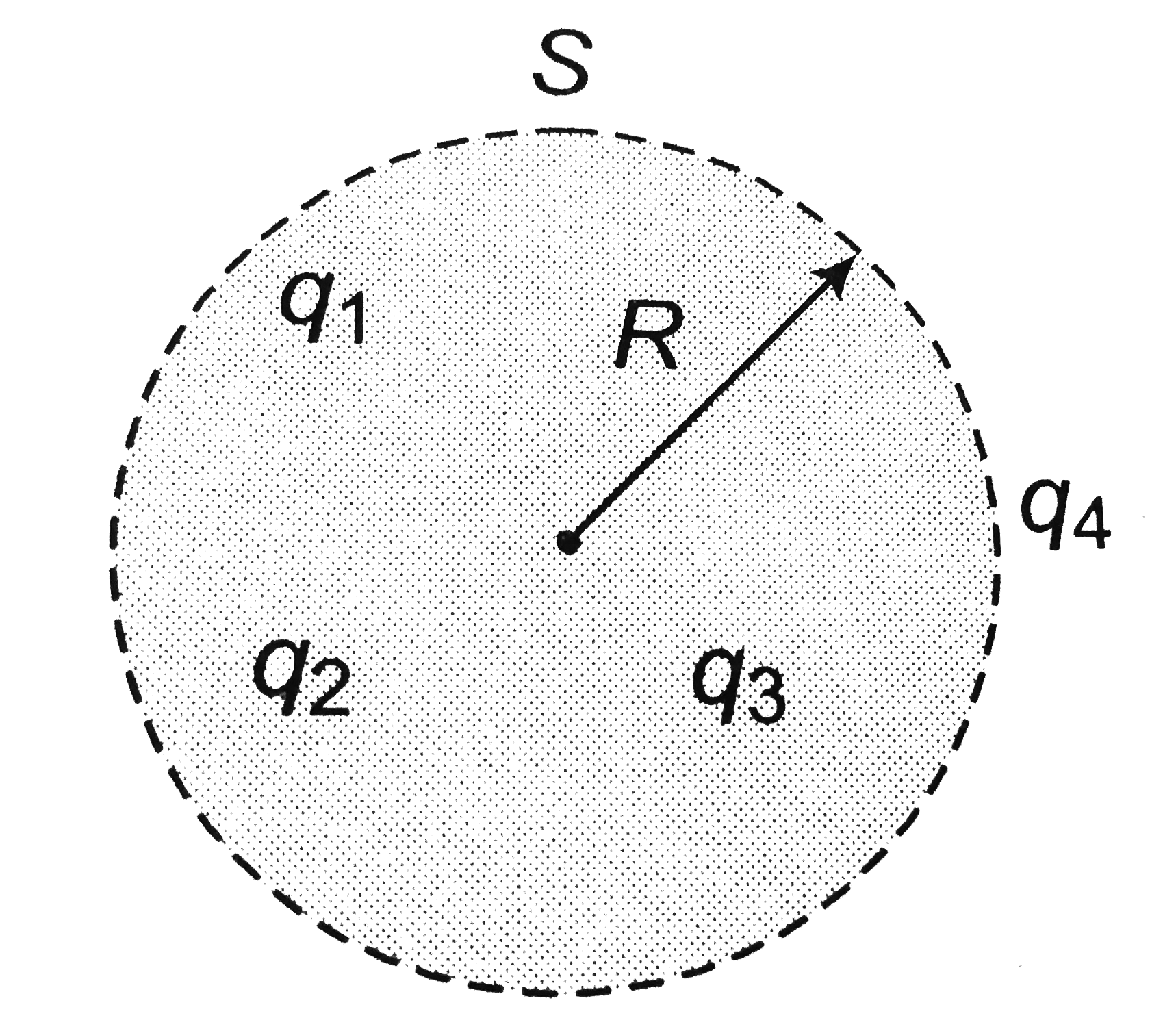A Gaussian surface enclosed no charge. Which of the following is true for a point inside it ?
electric field must be zero
electric potential must be zero
both electric potential and intensity must be zero
none of these
The correct Answer is:A
Step by step video, text & image solution for A Gaussian surface enclosed no charge. Which of the following is true for a point inside it ? by Physics experts to help you in doubts & scoring excellent marks in Class 12 exams.
Topper's Solved these Questions
Similar Questions
A spherical Gaussian surface surrounds a point charge q. If the charge is moved to another location inside the surface? Then total flux_____________
View SolutionIf net flux through a Gaussian surface is zero, then find whether the following statements are correct or not.
The net charge inside the surface is zero.View Solution
Knowledge Check
- Question 1 - Select One
q1,q2,q3 and q4 are point charges located at point as shown in the figure and S is a spherical Gaussian surface of radius R. Which of the following is true according to the Gauss's law
 A∮s(→E1+→E2+→E3).d→A=q1+q2+q32ε0B∮s(→E1+→E2+→E3).d→A=(q1+q2+q3)ε0C∮s(→E1+→E2+→E3).d→A=(q1+q2+q3+q4)2ε0DNone of these
A∮s(→E1+→E2+→E3).d→A=q1+q2+q32ε0B∮s(→E1+→E2+→E3).d→A=(q1+q2+q3)ε0C∮s(→E1+→E2+→E3).d→A=(q1+q2+q3+q4)2ε0DNone of these - Question 2 - Select One
Assertion(A):If Gaussian surface does not enclose any charge then →E at any point on the Gaussian surface must be zero.
Assertion(R ):No net charge is enclosed by Gaussians surface,so net flux passing through the surface is zero.ABoth A and R are true and R is the correct explanation of ABBoth A and R are True but R is not the correct explanation of A.CA is true and R is falseDA is false and R is true. - Question 3 - Select One
A Gaussian surface encloses a proton p. The electric field at any point on the surface is →€. The flux linked with the Gaussian surface is ϕ.
STATEMENT-1 : When an electron is kept close to this system outside the Gaussian surface, the flux linked with the surface would change.
and
STATEMENT-2 : The presence of electron will alterthe electric field on the gaussian surface.AStatement-1 is True, Statement-2 is True, Statement -2 is a correct explanation for Statement-1BStatement-1 is True, Statement-2 is True, Statement-2 is NOT a correct explanation for Statement-1CStatement-1 is True, Statement -2 is FalseDStatement-1 is False, Statement-2 is True.
Which of the following is true for electric flux through a Gaussian surface ?
View SolutionStatement-1: Suppose that a Gaussian surface enclose no net charge. Gauss law requires that electric field equals zero for all points on the surface.
Statement-2: If electric field equals zero everywhere on the surface, Gauss law requires that there be no net charge inside.View SolutionGauss's law and Coulomb's law , although expressed in different forms , are equivalent ways of describing the relation between charge and electric field in static conditions . Gauss's law is ε0ϕ=qencl,when q(encl) is the net charge inside an imaginary closed surface called Gaussian surface. The two equations hold only when the net charge is in vaccum or air .
A Gaussian surface encloses two of the four positively charged particles. The particles that contribute to the electric field at a point P on the surface are
 View Solution
View SolutionA point charge produces an electric flux of −1×103Nm2/C to pass through a spherical gaussian surface of radius 10 cm cenred on the charge. What is the value of the point charge?
View SolutionWhich of the following is true for electric-flux through a Gaussian surface ?
View Solution
